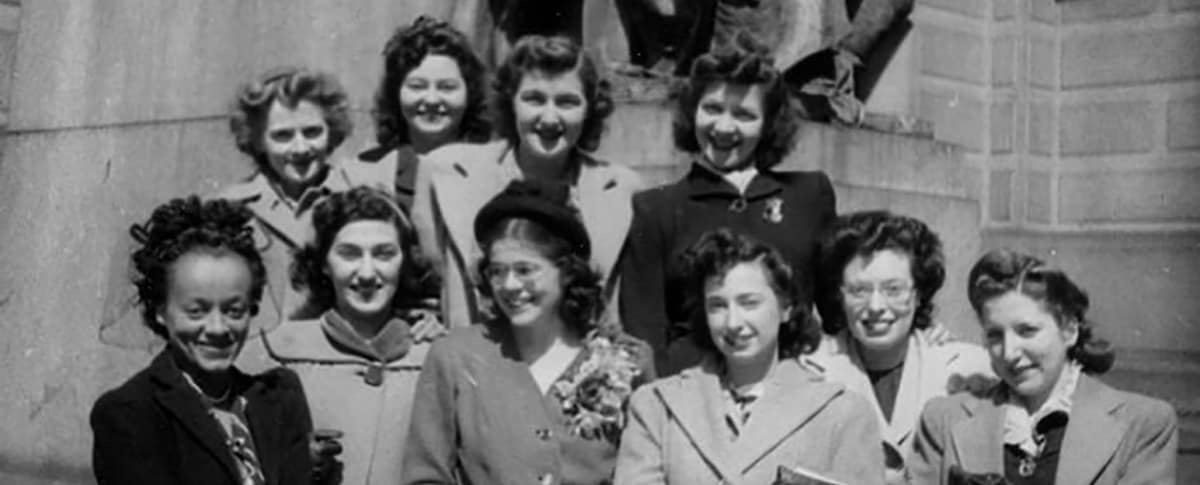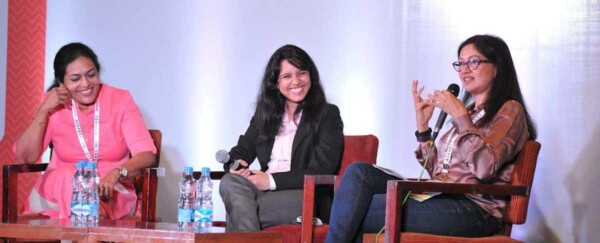
Credit: “Top Secret Rosies, c. 2010, Producer/Director: LeAnn Erickson, Still 1
“I could write a book…” is a phrase often heard at SWE Magazine. The stories we’re privileged to tell are on the order of a few thousand words. Relatively few paragraphs from hours of interviews and reams of notes make the page, and what’s left out becomes lost treasure. I’m glad to have a chance to share some of it here.
When I first encountered the Top Secret Rosies, an elite group of women mathematicians who played a crucial but unrecognized role in America’s World War II effort, I got goose bumps. Talking to LeAnn Erickson, the filmmaker behind an important documentary on the subject, I got them again. That reaction tells me when I’m in the presence of something authenticthe “real deal,” and this was certainly itan unknown chapter in American history.
As the writing and researching unfolded, I found not only a book’s worth of material, but also a number of striking coincidences and parallels that couldn’t be included in what turned out to be two remarkable stories.
To understand this particular nugget, you have to know a bit about my 86-year-old dad, Gil Lutz.
He narrowly missed the drafts of World War II. Instead, he served in Korea, and put himself through MIT on the GI Bill. Along the way, he became a mechanical engineer, raised a family, got a pilot’s license, and bought a 1947 Stinson Voyager, our family’s very special “bluebird.” Almost 60 years later, he still swoops through the skies of Ohio in this plane every chance he gets.
These days, Dad lives in Akron, Ohio, and meets regularly with a bunch of senior private pilots, many of whom have advanced engineering degrees and storied careers. One of them even built a World War I Sopwith triplane from scratch! These gents do their “hangar-flying” at a local diner where the waitresses draw straws to get their table.
As my first article on Erickson’s documentary came to print, my sister Melinde and I were invited into the “sanctuary.” For the first time in 20 years, there were women at the table!
“A thorn between roses,” one of the men quipped, at the sight of Dad flanked by the two of us. Melinde, a forensic genealogist, was already working with me on a follow-up for SWE about Alyce Hall, the only African-American Rosie in the group, whose whereabouts were then unknown.
Over plates of scrambled eggs and hash browns, I found myself regaling the group about the Rosies and the calibration work they did for the Norden bombsight, a military innovation that made targeting extremely accurate. In that first story, I wrote about how pilots of B-17s sometimes had to find
“Targets of opportunity,” said the elderly gentleman across the table from me. “I was a B-17 pilot.”
In my head, I yelled, “He’s a what?! But there’s none of them left!”
A chill ran up my spine as he explained exactly the story I’d just written: that bad weather sometimes kept his squadron from getting to the target. That planes couldn’t just land with all those explosives onboard. “We might cause runway damage,” he said, in the matter-of-fact way of his generation. “We had to drop the bombs somewhere before we could land.”
“That was me,” said the gentleman next to him, who had grown up during the war in a small, coastal Italian city. He explained how, as a boy, he’d watch the waves of bombers pass overhead and listen for the last sounds of them to fade. “Then we’d wait 15 more minutes. If we heard the engines again, long before we could see the planes, we knew we were in for it.”
A silence fell as the bomber pilot and his target, side by side, quietly regarded each other. Then, my dad, always one to put things simply, gently broke it. “I’m sorry,” he said.
There was no recrimination. These men are all fast friends, and the past was deemed the past. A few nods and murmurs, and we returned to the clinking of silverware and the pouring of hot coffeeand talk of the present day.
My mind reeled for the rest of that afternoon. The intersection of these lives and personal histories was uncanny. What on earth were the chances… ?
Learn more about the top secret rosies of WWII in the Conference 2013 and Winter 2014 issues of SWE Magazine, and be sure to join us next week for part two of this story.
Author
-
![Notes from the Cutting Room Floor: Top Secret Rosies [] SWE Blog](https://alltogether.swe.org/wp-content/uploads/2021/10/swe-favicon.png)
SWE Blog provides up-to-date information and news about the Society and how our members are making a difference every day. You’ll find stories about SWE members, engineering, technology, and other STEM-related topics.







